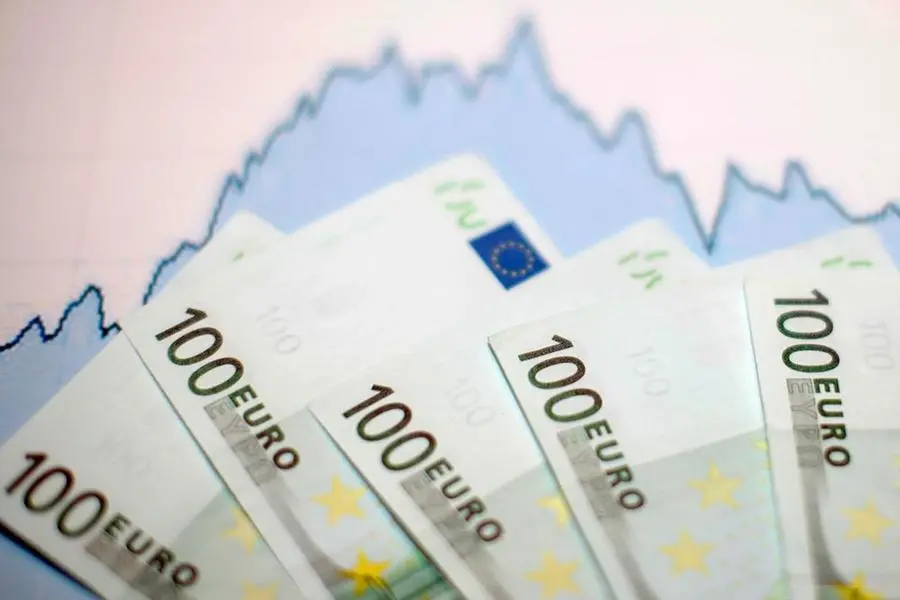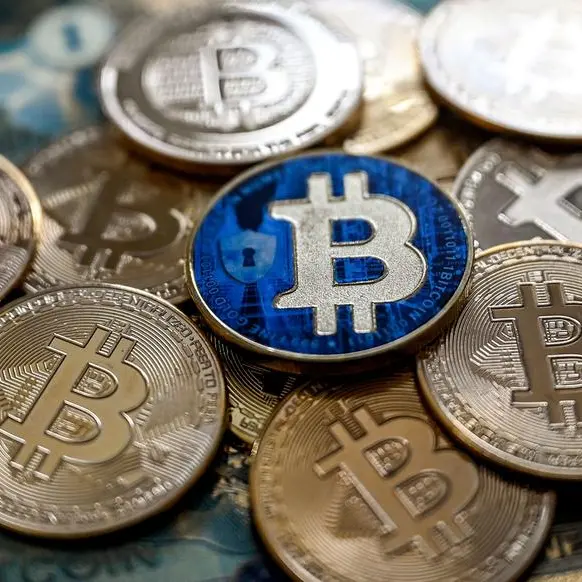PHOTO
Euro banknotes are placed on a currency graph in this picture illustration taken in Zenica
The euro strengthened on Monday after German inflation data, while commodity currencies rose on hopes for a turnaround in China's economy and the Japanese yen steadied as traders reacted to the new prime minister's call for a snap election.
Setting the broader tone for these moves was the U.S. dollar, which hovered near a one-year low against a basket of peers.
This week it will be shaped by non-farm payrolls data on Friday that will give the latest indication on the health of the U.S. economy, and the scale of rate cuts required in the next few months.
Expectations of significant U.S. monetary easing this year, which the Federal Reserve met with a recent 50-basis-point rate reduction, have sent the dollar lower against most majors in recent weeks.
The euro was at $1.1194, up 0.3% on the day, and strengthening a fraction after German inflation data showed price pressures were easing, though not as significantly as last week's figures from France and Spain. Bloc wide data is due Tuesday.
The common currency was steady on the day against the pound at 83.43 pence.
That French and Spanish data price data, along with the latest signs of weak economic growth, caused several big investment banks to change their European Central Bank calls last week to include an October rate cut as well as the widely expected December move.
That meant the European common currency has weakened against most peers, and held steady against the U.S. dollar, even given Beijing's economic stimulus measures that would normally be euro-positive due to the currency bloc's trade ties with China.
"That inflation data last week gives the ECB the justification to deliver back-to-back rate cuts in October and December, and that's certainly helping dampen the upside for the euro against the dollar from the China optimism that's coming into the market," said Lee Hardman, senior currency analyst, MUFG.
CHINA GROWTH HOPES
Elsewhere, the Australian and New Zealand dollars hit 2024 highs as rate cuts and expectations of fiscal support in China raised hopes of an improvement in the slowing economy and drove gains in Chinese markets and everything exposed to China's growth.
The Australian dollar hit a 20-month high of $0.6941, and the New Zealand dollar rose to $0.6375, its highest level in 14-1/2 months.
Both units gained on European currencies, with the euro falling as low as A$1.6082 to its lowest on the Aussie since mid-July.
The Japanese yen was also in focus as Shigeru Ishiba - a former defence minister and erstwhile critic of aggressively easy policy - who last week won the leadership of the ruling Liberal Democratic Party said he would call a general election for Oct. 27.
The yen surged on Friday, and edged out to a one-week high of 141.65 per dollar in the Asian hours, but further moves were limited as Ishiba told public broadcaster NHK that from the government's standpoint, policy must remain accommodative as a trend, given economic conditions.
Analysts said that was enough to pause the sharp rise in the yen following his victory and that a snap election could weigh on the yen at least over the short term.
"An election basically takes the Bank of Japan out of the equation until December ... a marginal yen negative," said Ray Attrill, National Australia Bank's head of foreign exchange strategy.
The dollar was last up 0.17% at 142.45 yen.
Beijing's raft of stimulus measures drove a rally in China's yuan last week, despite interest rates being lowered, as investors piled into Chinese stocks that notched their best week in a decade. The yuan broke the psychological 7-per-dollar mark in offshore trade on Friday though it hovered at 7.0125 in onshore trade on Monday.
Sterling was sitting out of most of the drama, up 0.2% on the dollar at $1.3402 and the Swiss franc softened, with the euro up 0.65% at 0.9439 francs, and the dollar 0.3% higher at 0.8429.
(Reporting by Tom Westbrook; Editing by Shri Navaratnam, Sam Holmes, Sherry Jacob-Phillips and Christina Fincher)





















